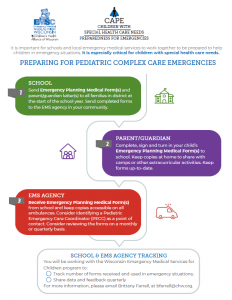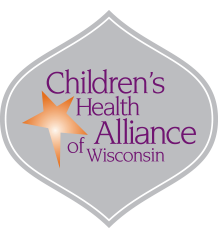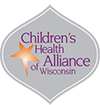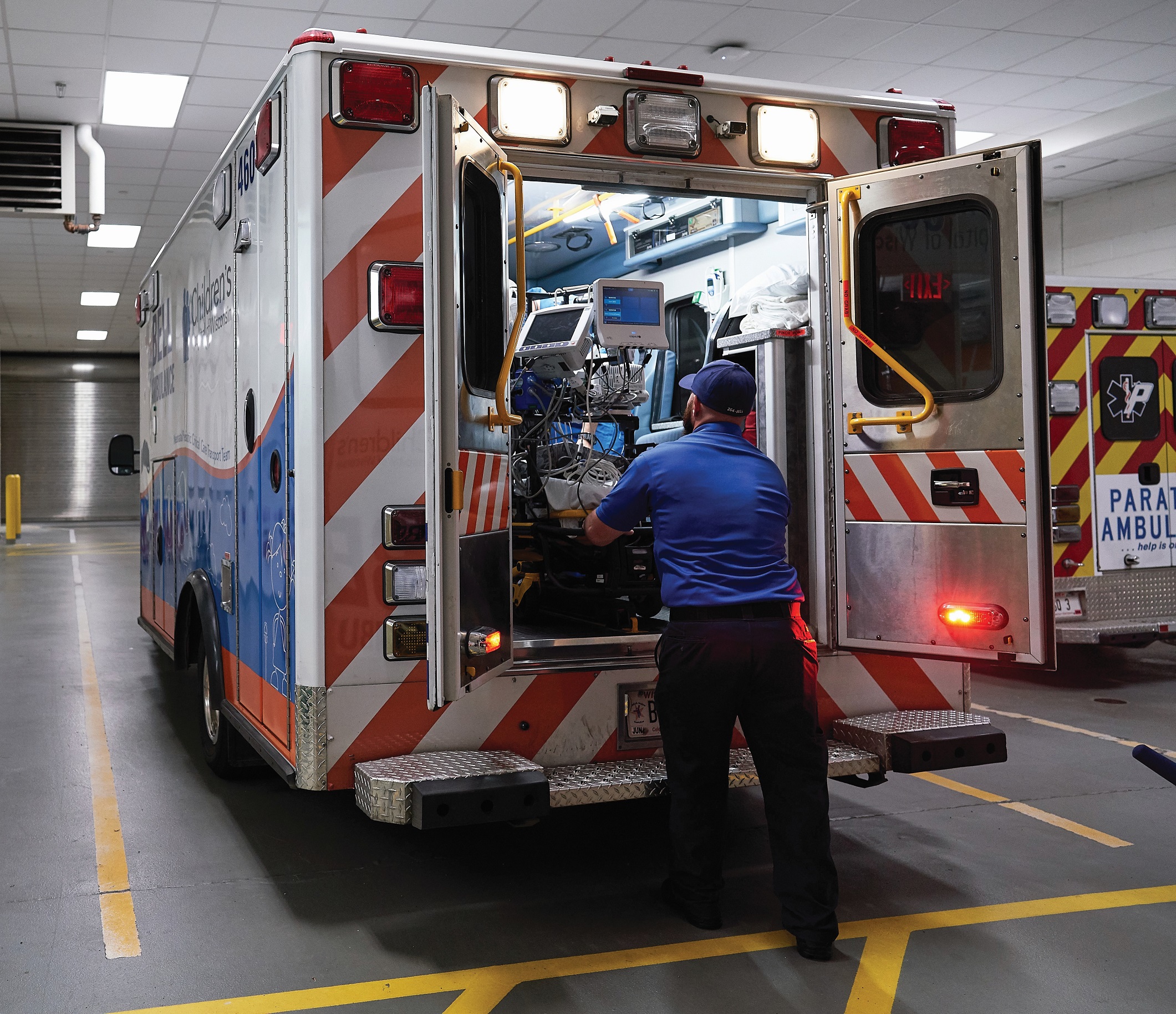Medical emergencies at school are unexpected and anxiety-inducing, especially for children with special health care needs. Wisconsin Emergency Medical Services for Children (EMSC) has made it possible for local emergency medical service (EMS) agencies to be prepared.
The program, known as CAPE (Children with Special Health Care Needs Preparedness for Emergencies), connects EMS and schools to help prepare both organizations in case of an emergency. EMSC initially developed CAPE with the help of Tabbi Vande Voort of Oconto EMS, based on a pilot she implemented within her own agency and community.

As an EMS provider, Patty Pesik wants her crew to provide the best possible care for every patient she treats in her community. Pesik is the Pediatric Emergency Care Coordinator (PECC) for Hillsboro EMS. She has been collaborating with EMSC by working with the School District of Hillsboro to implement CAPE over the last year. Pesik shared, “The team doesn’t frequently deal with children, so pediatric calls can bring some fear due to lack of experience. CAPE has helped the team feel prepared for each call and has allowed us to provide more, full circle care.”
CAPE starts with schools sending out an emergency planning medical form for parents to voluntarily complete. The form includes technical information about a child, such as any special health care needs, allergies, and medications. The form also allows parents to disclose supplementary information such as calming techniques, words to use and avoid and any other information parents would want EMS providers to be aware of when responding to an emergency.
Once the school receives the completed forms, copies are sent to the local EMS agency for review and safe-keeping. The form’s information lets school and EMS agency staff review critical care details about a child. In the case of EMS, the crew learns what to expect and how to treat the patient before arriving on the scene. These forms are worth the extra effort to ensure EMS are better prepared to help kids during an emergency.
“Having these forms on hand allows our crew to prepare specific equipment and items, such as EpiPens and insulin, to bring to the school setting. We’re also able to provide more individualized care and our community knows the team is prepped and ready to respond to pediatric specific calls,” said Pesik.
In addition to Hillsboro EMS and the School District of Hillsboro, CAPE has expanded to other communities across Wisconsin:
- Clayton School District
- Clear Lake EMS
- Clear Lake School District
- FitchRona EMS
- Turtle Lake School District
EMSC works with each agency and school to tailor CAPE to best suit their work flow processes. As more communities join, EMSC hopes to share these best practices among new and current EMS agencies.
Pesik also shared, “Pediatric care is critical – these kids are our future. Living in a rural community, our team needs to be prepared to respond to pediatric calls and the extra prep time results in better care. The more EMS agencies that implement this program, means more well-rounded care for our kids.”
For more information or to have your EMS agency participate in the CAPE program, please contact Brittany Farrell, Program Manager in Emergency Medical Services for Children, at bfarrell@chw.org.


